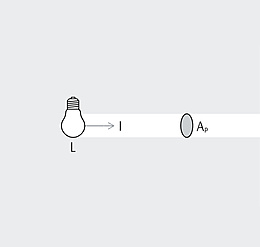
Illuminance E as a measure of luminous flux incident per surface unit A.
Illuminance (E) describes the quantity of light incident on a surface. It is the ratio of the incident luminous flux (Φ) to the size of the surface (A). The unit of measure of illuminance is lux (lx). This is defined as lumens per square meter (1lx = 1lm/m2). Illuminance recedes with the square of the distance from the light source (photometric law of distance).









